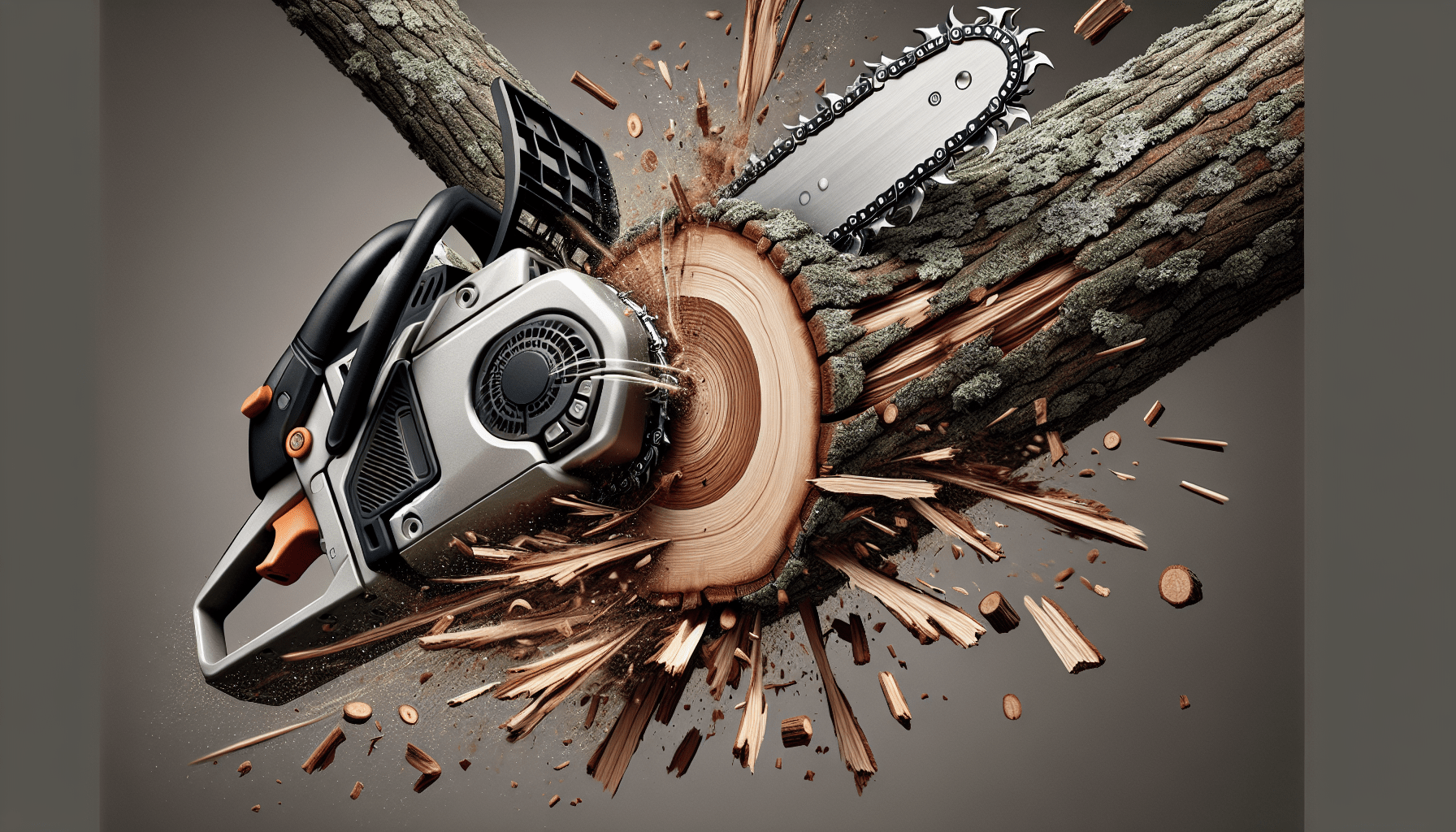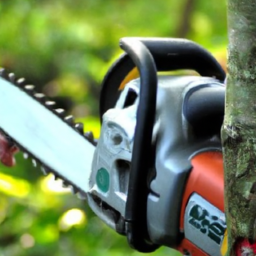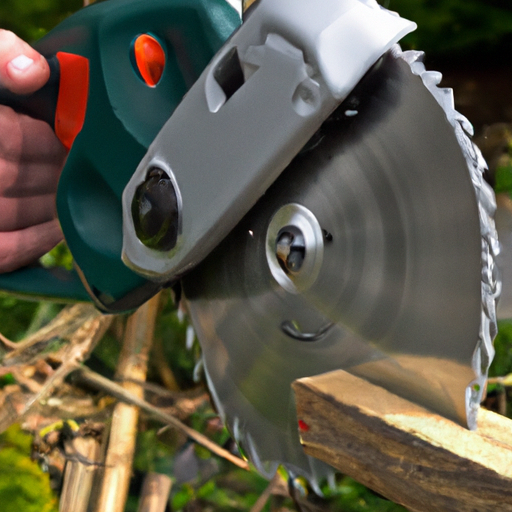If you’re considering adding a battery chainsaw to your collection of power tools but find yourself wondering how long they can actually last, you’ve come to the right place. In this article, we will explore the lifespan of battery chainsaws and give you valuable insights into what you can expect from these versatile tools. Get ready to discover the longevity of battery chainsaws and make an informed decision for your landscaping needs. Battery chainsaws can be a great tool for both professional and personal use. They offer the convenience of no cords or gasoline, and they are generally quieter and more environmentally friendly than their gas-powered counterparts. However, the lifespan of a battery chainsaw can vary depending on several factors. In this article, we will explore the key factors that can affect the lifespan of a battery chainsaw and discuss ways to extend its longevity.
Battery Technology
The type of battery used in a chainsaw plays a significant role in its overall lifespan. Three main types of batteries are commonly used in battery chainsaws: Lithium-Ion Batteries, Nickel-Cadmium Batteries, and Nickel-Metal Hydride Batteries.
Lithium-Ion Batteries
Lithium-Ion batteries are widely considered the best option for battery chainsaws due to their high energy density, longer run time, and lack of memory effect. They offer a longer lifespan compared to other battery types and are generally more efficient.
Nickel-Cadmium Batteries
Nickel-Cadmium batteries, also known as NiCad batteries, were once a popular choice for portable power tools like chainsaws. However, they have several drawbacks that can affect their lifespan, such as the memory effect and lower energy density compared to Lithium-Ion batteries.
Nickel-Metal Hydride Batteries
Nickel-Metal Hydride batteries, or NiMH batteries, are another option commonly used in battery chainsaws. While they have a higher energy density compared to NiCad batteries, they still fall behind Lithium-Ion batteries. However, they do offer a longer lifespan compared to NiCad batteries.
Battery Capacity
The capacity of a battery is measured in Ah (Ampere-hour) rating and plays a crucial role in determining its lifespan. A higher Ah rating indicates a higher capacity, which means the battery can supply more power over a more extended period. Additionally, the voltage of the battery also affects its capacity and overall lifespan.
Manufacturer and Quality
The manufacturer of the battery chainsaw and its overall quality can significantly impact its lifespan. It is important to choose a reputable brand known for producing high-quality tools. A well-built chainsaw will have better durability and reliability, thus increasing its overall lifespan. Additionally, paying attention to the warranty provided by the manufacturer is essential, as it can provide assurance of the product’s quality and potential repairs or replacements in case of any issues.
Maintenance and Care
Proper maintenance and care are crucial for maximizing the lifespan of a battery chainsaw. Neglecting maintenance can lead to premature wear and tear, reducing the overall longevity of the tool. Here are some key maintenance factors that should be considered:
Chain Tension
Maintaining the proper tension of the chainsaw chain is essential for both effective cutting and prolonging the lifespan of the chainsaw. A loose chain can lead to increased wear on the chain and bar, while an overly tight chain can strain the motor and decrease the overall efficiency.
Blade Sharpening
Regularly sharpening the chainsaw blade is necessary to ensure efficient cutting and reduce the strain on the chainsaw motor. A dull blade can cause the motor to work harder, leading to faster wear and decreased battery life.
Lubrication
Applying the right amount of lubrication to the chainsaw chain is crucial for reducing friction and heat during operation. This helps to prevent premature wear on the chain and motor. Following the manufacturer’s recommendations for lubrication frequency and using the correct type of lubricant is essential.
Cleaning
Regularly cleaning the chainsaw, especially after use in challenging conditions, is important for removing debris and preventing the accumulation of dirt and sawdust. This helps to maintain optimal performance and prevent damage to the chainsaw parts and motor.
Storage
Proper storage of the battery chainsaw when not in use is important to prevent damage and extend its lifespan. Storing it in a clean and dry location, away from extreme heat or cold, can help preserve the battery and prevent deterioration.
Usage Frequency
The frequency at which you use your battery chainsaw can also impact its lifespan. Regular use can wear down the motor and other components over time, decreasing its overall longevity. Additionally, the type of tasks performed with the chainsaw can also affect its lifespan.
Regular vs. Occasional Use
If you use your battery chainsaw frequently for extended periods, it will naturally undergo more wear and tear compared to occasional use. Regular use may require more frequent maintenance and could potentially shorten the lifespan of the tool.
High vs. Low Demanding Tasks
The type of tasks performed with the chainsaw can vary in terms of demands on the motor and battery. Cutting through dense and thick materials, such as hardwood, will put more strain on the chainsaw than lighter tasks. Consistently using the chainsaw for demanding tasks may decrease its lifespan compared to using it for lighter, less demanding tasks.
Average Lifespan of Battery Chainsaws
Several factors influence the average lifespan of battery chainsaws, including operational time and battery life cycles.
Operational Time
The operational time refers to the number of minutes the chainsaw can continuously work before the battery requires recharging. Different models of battery chainsaws offer varying operational times. It is important to consider the operational time of the chainsaw when choosing one for your needs. Using the chainsaw within its specified operational time can help prolong its overall lifespan.
Battery Life Cycles
Battery life cycles refer to the number of full discharges and recharges a battery can endure before significant capacity loss occurs. Most Lithium-Ion batteries commonly used in modern battery chainsaws can handle hundreds of full charges and discharges before experiencing a noticeable decrease in performance. However, it is essential to avoid deep discharges and overcharging, as this can significantly reduce the battery’s lifespan.
Extending the Lifespan of Battery Chainsaws
While the lifespan of a battery chainsaw is influenced by various factors, there are steps you can take to maximize its longevity:
Proper Storage and Care
Storing the chainsaw in a clean and dry environment, away from extreme temperatures, can help prevent damage and prolong its lifespan. Regularly inspecting and cleaning the chainsaw, as well as following recommended maintenance procedures, will also contribute to its longevity.
Regular Maintenance and Cleaning
Performing routine maintenance tasks such as chain tension adjustment, blade sharpening, lubrication, and cleaning will help keep the chainsaw in optimal condition. Regular maintenance ensures that the chainsaw operates efficiently, reducing strain on the battery, motor, and other components.
Correct Usage and Handling
Using the chainsaw correctly and following the manufacturer’s guidelines for operation is crucial for extending its lifespan. Avoiding aggressive cutting techniques and not pushing the chainsaw beyond its specified capabilities will help prevent premature wear and tear.
Avoiding Overheating and Overcharging
Overheating the battery and overcharging it can significantly reduce its lifespan. Monitoring the operating temperature of the chainsaw during use and ensuring proper charging times and procedures will help prevent overheating and overcharging.
In conclusion, several factors affect the lifespan of a battery chainsaw. Considering the battery technology, battery capacity, manufacturer and quality, maintenance and care, and frequency of use will assist you in choosing the right chainsaw for your needs and maximizing its overall longevity. Taking proper care of the chainsaw through regular maintenance, cleaning, and correct usage will contribute to its extended lifespan. So, invest in a high-quality battery chainsaw, follow the recommended maintenance procedures, and use it responsibly to enjoy its benefits for years to come.



